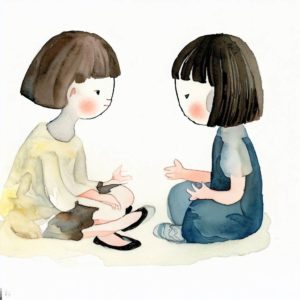
Hey there! Let’s have a chat about anger. We all experience it, right? It’s especially potent for kiddos who are still figuring out this whole “emotions” thing. Getting a grip on this intense feeling is a crucial part of their growing up. So, let’s explore three practical tactics that can help soothe that anger monster, no matter their age.
1. Foster Emotional Regulation Techniques
Teaching your kid the ability to calm themselves during an anger episode? Priceless. Let’s see how we can cultivate this in your little one.
- Positive self-talk: They say “the pen is mightier than the sword,” but let’s not underestimate the power of words. Coach your child to switch negative self-talk with positive affirmations. For example, rather than saying, “I always screw things up,” suggest they say, “I can learn from this.” A kind inner voice can significantly deflate an anger balloon.
- The Count-to-10 technique: It’s an oldie but a goodie. When anger strikes, teach your child to count to 10, or maybe even 20. This brief time-out helps them regain their composure and respond more thoughtfully.
- Deep Breathing: In moments of anger, deep, slow breaths can act like a soothing balm. This easy practice can help bring tranquility and clarity back to your child’s mind.
2. Cultivate Open Communication and Active Listening
We all want a safe space to express our emotions, and our kids are no different.
- Create a safe space: It’s crucial that your child feels free to communicate their feelings without fear of criticism or punishment. When we validate their emotions, including anger, we empower them to manage these feelings in healthier ways.
- Active Listening: When your child is voicing their anger, listen without interruptions or dismissals. Assure them that their feelings are important and they’re truly being heard. It’s amazing how much this simple act of understanding can help alleviate anger.
3. Introduce Problem-Solving and Conflict-Resolution Skills

Often, anger is a response to problems or frustrations. Why not equip our kids to be problem-solvers instead of problem-reactors?
- Identify triggers: Does your child get angry over specific situations or events? By recognizing these triggers, they can better anticipate and control their emotional responses.
- Explore solutions: Encourage your child to brainstorm different ways to tackle issues. Ask them to think about the impacts of their actions, fostering empathy and responsible decision-making.
- Encourage empathy and perspective-taking: Help your child to consider how others might feel in the same situation. This understanding can soften their responses, often leading to reduced anger.
So, there you have it! It’s crucial to remember that anger is a natural part of being human. Our goal isn’t to eliminate anger, but to equip our kids with the tools to express and manage it healthily. And hey, it’s not just kids – we adults could use a refresher on these techniques too, right? Remember, you’re their role model. When they see you handling your own anger wisely, they’re more likely to do the same.
The Journey of Grace
Let me share with you the story of Grace. Grace was a nine-year-old bundle of energy who had a knack for getting mad over little things. Her parents were worried and decided to try some of the techniques we just discussed. Grace agreed to give it a shot, even though she thought it was “kinda boring.”
Over time, Grace learned to replace her self-deprecating thoughts with more compassionate ones. Instead of thinking, “I always mess things up,” she started to tell herself, “Mistakes are how I learn.”
Grace also learned the magic of deep breathing. Whenever she felt her anger surging, she’d take deep breaths, and almost like magic, she could feel her anger subsiding. She also became a pro at counting to 10 before reacting when she felt her temper flaring.
But the real breakthrough came when Grace learned to communicate her feelings calmly. One day, instead of exploding at her brother for taking her toy, she said, “I feel angry when you take my things without asking. Please ask next time.” It was a game-changing moment for Grace.
Of course, the journey wasn’t without hiccups. But over time, Grace got better at managing her anger, and the peace at home began to return. It just goes to show that with the right tools and a little patience, kids of all ages can learn to manage their anger effectively.
So, let’s make anger our friend rather than our enemy. By understanding it and managing it, we can help our kids become happier, more balanced individuals. Here’s to a world filled with a little less anger and a lot more understanding!






